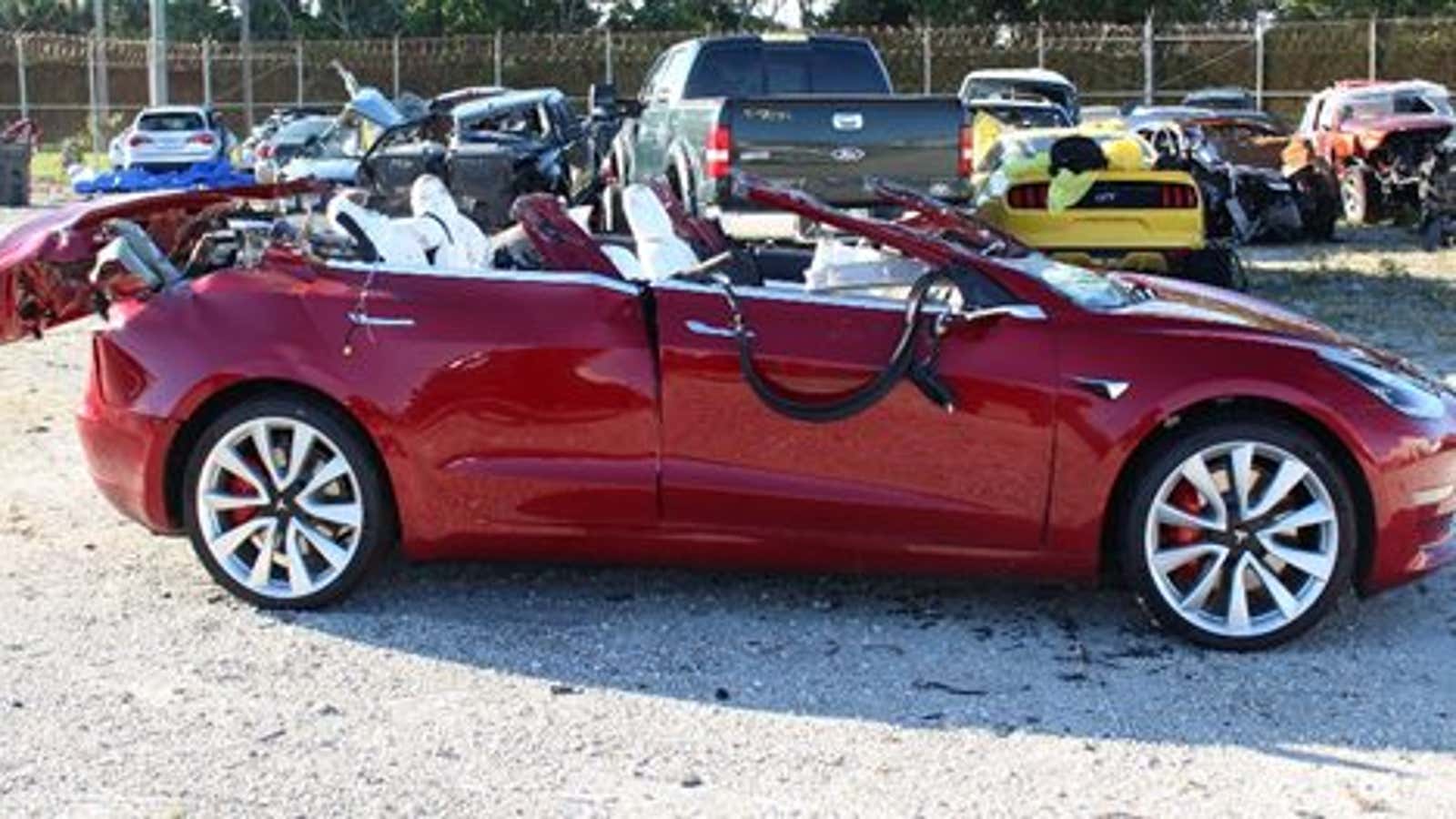Tesla’s semi-autonomous Autopilot software was engaged during a fatal crash in March, according to a report released by the US National Transportation Safety Board (NTSB) May 16.
On March 1, a Model 3 car slammed into a tractor-trailer attempting to cross a Florida highway traveling around 68 miles per hour, according to investigators who reviewed video footage from the car and nearby surveillance cameras. The impact sheared the roof off of the car, killing the driver, 50-year-old Jeremy Beren Banner. Investigators say Banner had engaged Autopilot about ten seconds before the crash, and did not have his hands on the wheels for up to eight seconds beforehand. NTSB did not assign blame to anyone for the incident and continues to investigate. Regardless, it’s at least the fourth lethal accident involving Tesla’s Autopilot so far.
The accident is very similar to the fatal crash of a Tesla Model S in Florida in 2016. Joshua Brown hit a tractor-trailer while driving on a highway with Autopilot engaged. Investigators found that Brown’s hands had been only on the steering wheel for 25 seconds over a 37-minute period when the car was in Autopilot prior to the crash. During that time, the car issued seven warnings to take the wheel. Neither the driver nor the car’s sensor system appeared to detect the tractor-trailer pulling across the road ahead and try to avoid a collision.
The NTSB’s subsequent investigation into the 2016 crash faulted Tesla for not forcing drivers to pay attention at high speeds, but blamed a combination of driver error and an overreliance on vehicle automation. It issued new safety recommendations in the wake of the incident.
Tesla has since updated Autopilot to issue more alerts to drivers and disable the software if those are ignored. The partially self-driving software now issues drivers a visible or audio warning after 30 seconds and 45 seconds before disabling the feature after one minute if the drivers does not take the wheel. Tesla regularly updates the software on its cars wirelessly, and has shut off functionality on vehicles if owners do not agree to the updates. Quartz asked Tesla for clarification whether every older Tesla vehicle on the road has received its Autopilot update.
In 2016, Tesla also switched from relying on cameras to enhanced radar sensors as its primary sensor to detect and avoid objects as far as three cars ahead. In December 2016, Tesla CEO Elon Musk retweeted a video of a Tesla automatically avoiding an accident thanks to the new sensor system.
Tesla has insisted its software will eventually be safer than human drivers, sharply reducing the more than 1.25 million global traffic fatalities each year. When announcing the new radar system in Sept. 2016, Musk said it would “very likely” prevent accidents like the Florida collision that killed Brown.
“This may not always prevent a collision entirely, but the impact speed will be dramatically reduced to the point where there are unlikely to be serious injuries to the vehicle occupants,” stated Tesla’s 2016 blog post announcing the changes. “The net effect of this, combined with the fact that radar sees through most visual obscuration, is that the car should almost always hit the brakes correctly even if a UFO were to land on the freeway in zero visibility conditions.”
But that apparently wasn’t enough in this incident.
A Tesla spokesperson said over email that the company was working with NTSB investigation and all drivers must keep their hands on the steering wheel at all times. “We are deeply saddened by this accident and our thoughts are with everyone affected by this tragedy,” the spokesperson wrote.
“Tesla drivers have logged more than one billion miles with Autopilot engaged, and our data shows that, when used properly by an attentive driver who is prepared to take control at all times, drivers supported by Autopilot are safer than those operating without assistance. For the past three quarters we have released quarterly safety data directly from our vehicles which demonstrates that.”
